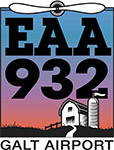There is not much time spent on leaning the mixture during private pilot training and consequently many pilots don’t fully understand why we need to do it. It’s actually a lot more important than the lack of emphasis implies.
Piston or reciprocating aircraft engines require fuel and air to be mixed to a precise ratio in order to achieve optimal engine performance in all phases of flight. What we are looking for is the best power output with an ideal engine temperature, and at a desired fuel consumption rate.
Because optimal performance is dependent on power settings and air density, pilots need to manually adjust the mixture to compensate for these factors.
Air density decreases (the air gets thinner) as altitude increases and also when the outside air temperature increases. High temperatures in the summer months can result in significant air density reduction even here in the Midwest. When you climb to a cruising altitude, the higher you go the thinner the air becomes, which means less oxygen is being forced into the engine and the fuel flow must therefore be reduced to correspond to the lower oxygen level.
One reason to lean the engine correctly is to obtain the predicted fuel consumption for each flight. Aircraft performance calculations are based on leaning to best power or best economy during cruise, which means effective leaning is directly related to endurance.
Getting comfortable with adjusting the mixture is important because running either too rich or too lean can cause engine problems. Too rich causes too much cooling and excess unburned fuel may accumulate and foul the spark plugs, valve guides and other engine parts. Too lean may result in a reduction in power output and running too hot, which could ultimately cause serious and expensive damage to internal engine parts.
To avoid these problems and get the best power from a normally aspirated engine, you need to keep the fuel/air ratio close to the ideal ratio. You may have read about the Stoichiometric ratio, a point where the fuel and air are perfectly balanced so there is no unburned fuel or oxygen at the end of the combustion event. However, although the Stoichiometric setting, or peak EGT, might be the most chemically perfect mixture but it’s not necessarily the best setting for the engine.
The correct ratio depends on each engine make and model, which means for specific leaning procedures pilots are advised to use the Pilot’s Operating Handbook (POH) and other service instructions from their engine’s manufacturer.
Beth Rehm, CFII

